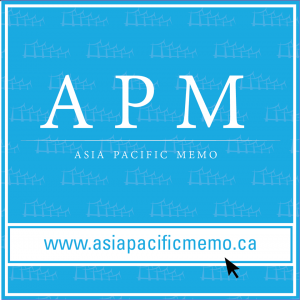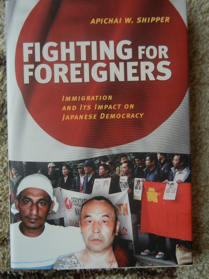Filipina Immigrant Girls’ Lived Experience in Japan
Memo #134 – Filipina women, who entered Japan as “entertainers” or as the spouses of Japanese men, sometimes left children behind to be raised by relatives in the Philippines while they built economically viable lives in Japan. More and more, the teenage children of these migrant women are entering Japan, entering Japanese schools, and entering society as an important and recent immigrant youth population. These youth are being reunited with their mothers, beginning lives with unknown step-families, and struggling to learn Japanese – which is often their third or fourth language. Most scholars focus on how immigrant youth are victimized by an assimilationist-oriented education system, with its Japanese-only language policies and hyper-competitive high school entrance exams. But this focus allows only a small glimpse of their lived experience.
Becoming a Commercial Marriage Broker in Malaysia
Memo #133 – In the last two decades, East Asian countries have experienced a dramatic rise in international marriages. Much of it is between men in the wealthier countries of Japan, South Korea, Taiwan, and Singapore, and women from poorer countries in the region. Among Chinese Malaysians, the number of marriages between the men and Vietnamese women increased from 28 in 2001 to 1,185 in 2005. To explain this increase, the media began to cover the proliferation of commercial matchmaking agencies in the early 2000s. But the role that Vietnamese wives play in the matchmaking business has attracted little attention.
The Philippines’ Labour Export Policies – Pros and Cons
Memo #122 – The Central Bank of the Philippines announced recently that despite the global economic crisis, remittances from Overseas Filipino Workers (OFWs) would hit $20 billion by the end of 2011. This is seven per cent higher than in 2010 and raised foreign exchange reserves to $76 billion, resulting in a $9 billion surplus in the country’s balance of payments. What lies beneath the surface of such good news?
Foreign Workers and the Wildfires of Democracy in East Asia
Memo #111 – As democratic movements spread to the Middle East and North Africa, hopeful observers and nervous authoritarian leaders wondered when they will reach Asia. In fact, they already arrived there in the late 1980s. But another East Asian democratic revolution has been taking place over the past decade, brought about by foreign workers.
Ending Islamic Solidarity in Post 9/11 Pakistan: New Restrictions on Migrants
Memo #100 – The rise of the “security state” is not just a Western phenomenon. Post 9/11 Pakistan has seen a proliferation of new surveillance technologies that created social divisions and marginalized long-term migrants previously welcomed in the name of Islamic solidarity.
Self-searching Migrants: Japanese Temporary Residents in Canada in the Age of High Mobility and Self-Reflexivity
Memo #94 – The term “self-searching” (自分探し – jibun-sagashi) has become a cliché in Japan since the early 1990s, when the high-growth period ended. Economic stagnation obliged many new university graduates to get unstable and unfulfilling jobs. Since then, an increasing number of young Japanese have become “self-searching migrants” forming a new category of trans-Pacific migration. Just as migrants around the world have for centuries, Japanese young people are embarking on journeys across the Pacific in search of a professional or personal calling.
Understanding Indonesian Migration via Labour Brokers
Memo #78 – Are brokers crucial to international migration in Asia? Yes, based on the results of a recent workshop at the National University of Singapore. Brokers’ importance is increasing due to new bilateral agreements and market deregulation. But a full analysis of Asian migration also depends on understanding the social relationship between brokers and migrants, and the way migrants come to trust an emerging class of informal brokers.
Indonesian Domestic Workers’ Rights in Malaysia
Memo #75 – Malaysia has experienced a shortage of domestic workers since 2009. This is because Indonesia banned its domestic workers from finding employment in Malaysia, in response to reports of abuse. Negotiations on an inter-state Memorandum of Understanding (MoU) to increase labour protection for Indonesian domestic workers have stalled on issues such as minimum wage, days off, and the right of domestic workers to retain their identity documents. The two governments are set to sign the MoU in May 2011, but Malaysia’s recent actions indicate that it may not be entirely committed to the protection of migrant domestic workers.
Diverging Patterns for Incorporating Immigrants in Korea and Japan
Memo #56 – In the mid 2000s, Korea and Japan unveiled unprecedented proposals for immigrant incorporation. This included the Basic Act on the Treatment of Foreigners in Korea and the Ministry of Internal Affairs and Communications’ plan for Multicultural Coexistence Promotion in Local Communities in Japan. These plans acknowledged for the first time the need to manage foreigners settled within each country. But they also represented contrasting frameworks for their incorporation. In Korea, there was centralized rights-based legislation that targeted specific immigrant groups and in Japan, there were decentralized guidelines that prioritized community-based partnerships.



